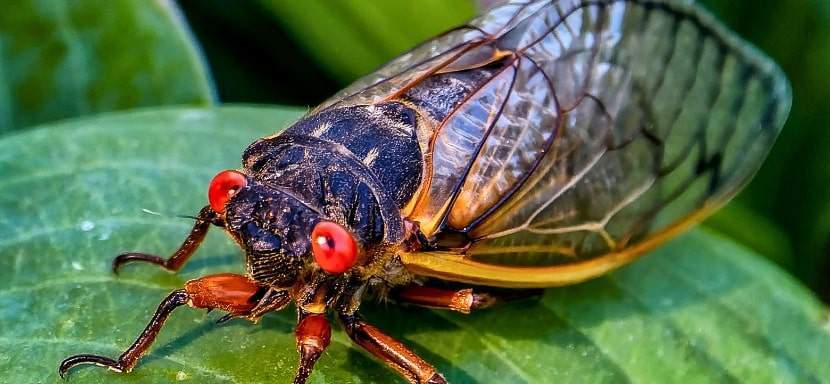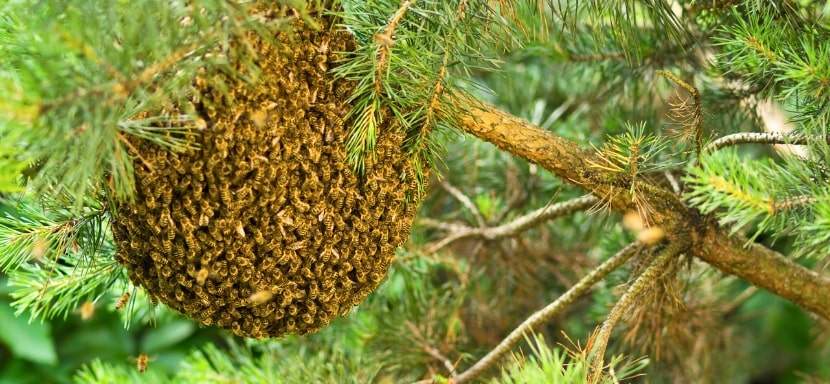How to Survive a Cicada Infestation

Cicada Infestation Survival Tips and Strategies
Cicadas have fascinated humans for millennia. These insects are known for their distinctive life cycles, particularly the periodical cicadas that emerge in massive numbers every 13 or 17 years.
The earliest recorded observations of cicadas date back to ancient Greece. Aristotle wrote about them in his “History of Animals,” noting their emergence from the ground and transformation from nymphs to flying adults. Cicadas have also been featured in Chinese literature and folklore for centuries, symbolizing rebirth and immortality due to their long underground life stages followed by brief but vibrant adult lives. In many cultures, cicadas have been used in art, music, and literature as symbols of carefree living and immortality.
Key Points
- Cicada Biology Knowledge: Understanding cicadas’ types, life cycles, and emergence patterns is crucial for effective management.
- Preventative Tactics: Utilize physical barriers and timely pruning to protect plants from cicada damage.
- Noise and Cleanup Management: Implement noise reduction strategies and ensure proper cleanup of cicada debris to maintain hygiene and prevent secondary issues.
What is a Cicada?
A cicada is an insect known for loud mating calls, typically produced by males to attract females. These insects are divided into two groups: annual cicadas, which appear yearly, and periodical cicadas, which emerge in large groups every 13 or 17 years. Cicadas have stout bodies, broad heads, transparent wings, and large eyes. While harmless to humans, they can damage young trees when laying eggs. Cicadas spend most of their lives underground as nymphs, emerging only to reproduce.
Understanding Cicada Biology and Their Lifecycle
Cicadas are intriguing insects with a lifecycle and behaviors that significantly impact their environments. This section explores cicadas’ biological traits and lifecycle patterns, which are crucial for devising effective management strategies.
Cicada Fundamentals: Knowing Your Enemy
Cicadas are divided into two primary types: annual cicadas and periodical cicadas.
- Annual Cicadas: These cicadas appear every year. They are typically green and spend 2-5 years as nymphs underground before emerging, although they emerge annually due to overlapping generations.
- Periodical Cicadas: Known for their striking black bodies and red eyes, they emerge synchronously in large numbers after spending 13 or 17 years underground. Their long developmental period and synchronized emergence are survival strategies that overwhelm predators, ensuring enough survival to reproduce.
The Rhythms of Emergence: When and Why Cicadas Surface
The emergence of cicadas is intricately tied to specific environmental cues:
- Temperature Trigger: Cicadas typically emerge when the soil temperature consistently reaches about 64°F (18°C) at a depth of 8 inches. This condition usually occurs in late spring or early summer.
- Survival Strategy: The timing ensures the ground is warm enough for active metabolism but not so hot as to risk desiccation. Emerging en masse maximizes the chances of survival and successful reproduction by satiating predators with sheer numbers before they can eat a significant portion of the population.
Predicting and Preparing for Emergence
- Monitoring Soil Temperatures: Homeowners and gardeners can monitor local soil temperatures to predict the emergence more accurately.
- Preventative Measures: Knowing the approximate emergence time allows for preparing protective measures for young plants and trees susceptible to cicada damage.
Did You Know?
In many cultures, cicadas are considered a delicacy. They are harvested, cooked, and eaten for their high protein content, often compared to the taste of soft-shelled crab.
2024 Cicada Emergence: Broods XIII and XIX
In 2024, a unique natural phenomenon will occur as Brood XIII and Brood XIX cicadas emerge simultaneously across the eastern United States. This simultaneous emergence marks a rare event not seen since 1803. These two broods, which have 17 and 13-year cycles, will emerge when the soil temperature consistently reaches about 64°F, typically in late spring to early summer. This section will explore what to expect and how to prepare for their arrival.
What to Expect During the Emergence
- Large Populations: Cicada densities can be incredibly high, potentially exceeding a million per acre in favorable conditions. This immense population will create an extraordinary display, often described as a “spectacular, ma”abre Mardi Gras” of insects.
- Geographical Spread: Brood XIII will mainly affect areas with a historical pattern of emergence every 17 years, while Brood XIX, following a 13-year cycle, will emerge in slightly different regions. Despite their vast numbers, these broods are expected to appear in distinct but concurrent patterns across multiple states without significant overlap.
- Timing and Temperature: The emergence is triggered by soil temperatures reaching about 64°F at a depth of eight inches. Depending on local climate conditions, this is most likely to occur from late May through June.
Preparation and Impact Management
- Noise Preparation: The noise from the collective chirping of millions of cicadas can be overwhelming. Residents might consider soundproofing measures or planning outdoor activities around peak emergence times.
- Protecting Young Trees: Cicadas can cause damage to young trees when they lay eggs in small branches. It’s advisable to use fine netting to cover young trees and shrubs to prevent cicadas from laying eggs on them.
- Avoid planting new trees or doing extensive pruning just before the emergence season.
- Dealing with Cicada Debris: After the cicadas die, their bodies can accumulate quickly, requiring prompt cleanup to prevent odor and decay in residential areas. Here are some tips for managing this:
- Regularly clean up cicada bodies from your property to maintain sanitation.
- Consider composting cicada bodies if municipal waste management systems allow, as they are organic matter.
- Public Health and Safety: While cicadas are not directly harmful to humans, the number of insects can be a nuisance. Keeping windows and doors closed or screened is critical to prevent cicadas from entering homes.
- Be aware that pets may try to eat the cicadas, which are generally harmless but can cause digestive upset if they consume too many.
During the Infestation: How to Cope with the Swarm
When cicadas emerge en masse, their presence can be overwhelming due to the intense noise and the mess created by their large numbers.
Here are a few strategies to help you manage these aspects effectively.
Noise Management: Keeping the Peace Amidst the Buzz
Cicadas are notorious for their loud mating calls, which can be as loud as 100 decibels—similar to a motorcycle running. Here are some ways to manage the noise:
- Use Soundproofing Techniques: Installing soundproof windows or adding thick curtains can significantly reduce the amount of noise that enters your home.
- Create Quiet Zones: Identify parts of your home that are naturally quieter and use them as relaxation areas during peak cicada activity.
- Use White Noise: Devices that produce white noise or play background music can help mask the cicada’s buzz, making it less disruptive.
Handling Cicada Presence: Hygiene and Maintenance
After the cicadas die, their bodies can accumulate, creating a potential mess and health hazard. Here’s how to handle the cleanup:
- Regular Cleaning: Sweep or vacuum your property regularly to collect cicada bodies before they decompose and cause odor problems.
- Use Protective Gear: When cleaning up cicada debris, wear gloves and a mask to avoid direct contact with the insects, which might carry allergens.
- Proper Disposal: Cicada bodies should be disposed of in sealed bags to prevent them from attracting other pests. Composting is also an option for those who prefer a more environmentally friendly method.
Long-term Strategies and Community Involvement
Building resilience to cicada infestations isn’t just about immediate actions; it involves long-term strategies and community involvement that can significantly reduce the impact of these events over time. This section explores how collective efforts and policies can strengthen community preparedness for cicada emergences.
Building Cicada Resilience: Community Actions and Policies
Working together as a community can make a big difference in managing cicada infestations effectively:
- Organize Community Clean-Ups: Coordinate with local government and community organizations to arrange clean-up days after major cicada emergences. This helps keep public spaces clean and reduces the workload on individual property owners.
- Share Resources: Set up programs to share expensive resources like netting. This can be especially helpful for protecting young trees in community spaces and private gardens.
- Develop Local Policies: Work with local authorities to create guidelines that help manage cicada impacts, such as waste disposal procedures during peak emergence times.
Educational Opportunities: Learning from Each Emergence
Every cicada emergence offers valuable lessons about the natural world and our place within it:
- School Programs: Encourage schools to include lessons on cicadas in their science curricula during emergence years. This can cover topics from cicada biology to the ecological impacts of their life cycles.
- Community Workshops: Host workshops at local community centers or libraries that educate the public about cicadas. These can include how to protect property from damage, the benefits of cicadas to the ecosystem, and how to handle the insects safely and hygienically.
- Citizen Science Projects: Promote participation in citizen science projects that track cicada emergences, such as smartphone apps that collect data on sightings. This helps scientists gather valuable data and engages the community in a hands-on learning experience.
FAQs About Cicada Infestations
What are the best materials for cicada barriers?
How often do cicada infestations occur?
Are there any environmentally friendly cicada repellents?
Yes, there are environmentally friendly options for repelling cicadas. These include using natural barriers like netting, manually removing cicadas, and using natural predators like birds or small animals that feed on cicadas. Chemical repellents are generally not recommended due to their environmental and wildlife impact.
How do I dispose of dead cicadas?
Dead cicadas can be disposed of by being collected in a bag and thrown in the trash. Alternatively, if you have a compost pile, cicadas can be added as they are organic and will decompose over time, enriching the soil with nutrients.
Can cicadas damage the structural integrity of my home?
Cicadas do not pose a threat to the structural integrity of buildings. Their primary impact is on vegetation, as female cicadas cut slits into the branches of young trees to lay their eggs, which can damage small trees and shrubs.
How can I educate my community about cicadas?
Educating your community about cicadas can involve several approaches:
- Organize informational sessions with experts such as entomologists or local university staff.
- Distribute flyers or create a community website with information on cicada biology, their ecological role, and how to manage their emergence.
- Coordinate with local schools to include cicada education in their curriculum during emergence years.
- Use social media platforms to share interesting facts and updates about cicada emergences in your area.
Conclusion: Embracing the Cicada Cycle
Cicada emergences should not be seen as inconvenient infestations but as integral parts of our local ecosystems. This section discusses how, with the right preparation and mindset, we can protect our living spaces and appreciate the remarkable natural cycle of cicadas.
Embrace and Prepare: Understanding Leads to Harmony
Understanding the biology and behavior of cicadas is crucial for living harmoniously with them. Here’s how both mitigate their impacts and enjoy their presence:
-
Educate Yourself and Others: Learning about cicadas in the ecosystem helps shift the perspective from viewing them as pests to appreciating them as essential ecological actors. Share this knowledge with neighbors and local community groups to broaden this understanding.
-
Implement Preventative Measures: To minimize inconvenience, proactive measures include using mesh netting over young trees and scheduling outdoor activities outside peak cicada hours.
-
Prepare for Their Arrival: Knowing when cicadas will likely emerge, based on soil temperature and historical patterns, allows for timely preparations that reduce their impact on your daily life.
-
Appreciate the Phenomenon: Take the time to observe cicadas’ fascinating behaviors and lifecycle. This can be a unique educational opportunity for both children and adults, transforming an otherwise disruptive event into an enriching experience.
-
Foster Community Initiatives: Engage in or initiate community efforts to manage and learn from cicada emergences. This could include community talks, shared resources for tree protection, and clean-up efforts post-emergence.
By embracing cicadas as a natural part of our environment and preparing adequately for their arrival, we can reduce their impact while enhancing our appreciation for the natural world. This balanced approach alleviates the challenges posed by cicadas and enriches our interaction with local biodiversity.
Fascinating Cicada Facts
These fascinating aspects highlight cicadas not just as noisy insects but as creatures with complex behaviors and significant ecological roles.
- Ancient Inhabitants: Cicadas have been around since the time of the dinosaurs, with fossils dating back over 200 million years.
- Long Underground Life: Periodical cicadas spend most of their life—13 or 17 years—underground as nymphs, which is among the longest lifespans for any insect.
- Loud Chorus: Cicadas are among the loudest insects in the world, with their calls reaching up to 100 decibels, equivalent to the noise level of a motorcycle.
- Temperature Sensitive: The exact timing of a cicada’s emergence from the ground is determined by soil temperature—specifically, they begin to emerge when the soil at about eight inches deep reaches 64 degrees Fahrenheit.
- Prime Numbered Lifecycles: The 13 or 17-year lifecycle periods of periodical cicadas are thought to help avoid synchronization with predator cycles, a clever evolutionary strategy to evade extinction.
- Symbol of Immortality: In many cultures, cicadas symbolize rebirth and immortality, particularly because of their long underground phases followed by brief, vibrant adult lives.
- Culinary Delight: In some parts of the world, cicadas are considered a delicacy and eaten for their high protein content, often prepared by frying or roasting.
- Cicada Song: Only male cicadas can sing. They produce their iconic sound using a membrane called a tymbal located on their abdomen.
- Mass Emergence: When periodical cicadas emerge, they do so in huge numbers, sometimes in the millions, which overwhelms predators and ensures that enough of them survive to reproduce.
- Natural GPS: Research suggests that cicadas might be able to count the annual cycles of trees to keep track of time during their long underground phase.
More Wild Frontier Scenarios
How to Survive a Mountain Lion Attack
Learn how to survive a mountain lion attack with practical steps to protect yourself and stay safe in. Surviving a…
How to Survive a Raccoon Attack
It’s a quiet evening, the moon is out, and maybe you’re taking out the trash or just enjoying a night…
How to Survive a Wild Boar Attack
Encountering a wild boar is like meeting your ex at a grocery store—unexpected, unnerving, and, in most…
How to Survive a Swarm of Bees
Surviving a bee swarm might sound like a scene out of a movie, but it’s a real concern for those who…
How to Survive a Skunk Spray
Getting sprayed by a skunk is a smelly situation that no one wants to find themselves in. However, if…
Recent Survival Posts
How to Survive a Layoff
Layoffs feel personal—even when they’re not. One day, you’re responding to Slack messages and forwarding…
How to Survive a Drug Test
I never imagined I’d be so emotionally invested in a paper cup. But there I was, standing under the fluorescent…
How to Survive an Interrogation
If you’ve ever been caught in the crosshairs of an overly enthusiastic mall cop or stared down by someone…
How to Survive a Nightclub Shooting
Nightclubs pulse with life—lights flashing, music pounding, bodies packed tight on the dance floor. It’s a place to…
How to Survive a Bachelor Party
A bachelor party is a delicate mix of celebration, chaos, and questionable decision-making, wrapped…
More Nature’s Wrath Survival Scenarios

How to Survive a Raccoon Attack
It’s a quiet evening, the moon is out, and maybe you're taking out the trash or enjoying a night on your porch. And suddenly, out of the shadows, bam! There it is—those black-ringed eyes glowing at you like some creature from a raccoon version of “The Shining.” If...

How to Survive a Wild Boar Attack
Encountering a wild boar is like meeting your ex at a grocery store—unexpected, unnerving, and, in most cases, best avoided. Yet, wild boars aren't interested in your baggage or drama; they're just trying to mind their own business—unless they think you're a threat....

How to Survive a Swarm of Bees
Surviving a bee swarm might sound like a scene out of a movie, but it's a genuine concern for those who love the outdoors. Imagine this: you're hiking on a beautiful sunny day, enjoying the tranquility of nature, when suddenly you hear a low buzzing sound that...

How to Survive a Skunk Spray
Getting sprayed by a skunk is a smelly situation that no one wants to find themselves in. However, if you do end up as a target of this defensive mechanism, knowing how to handle the aftermath can make a huge difference. Let's explore some practical steps and advice...

How to Survive a Bear Attack
Bear Attack Survival Tips and Strategies Though rare, bear attacks can occur because bears remember food locations for years and may silently track humans to assess threats or follow scents. Surviving a bear attack involves more than just reacting during an encounter;...
More Survival Scenarios

How to Survive a Layoff
When the Floor Falls Out: The Reality of a Layoff Layoffs feel personal—even when they're not. One day, you're responding to Slack messages and forwarding emails. Next, you're staring at your monitor as it logs you out... for good. Whether it's a restructuring, a...

How to Survive a Drug Test
The Cup, The Room, The Truth I never imagined I’d be so emotionally invested in a paper cup. But there I was, standing under the fluorescent hum of a strip-mall clinic, trying to recall the last time I ate a poppy seed bagel. That’s the thing about drug tests—they...

How to Survive an Interrogation
If you've ever been caught in the crosshairs of an overly enthusiastic mall cop or stared down by someone in a uniform with a clipboard and a glare, you’ve felt it — the chilly fingers of interrogation anxiety. And while most of us imagine interrogation scenes as...

How to Survive a Nightclub Shooting
Nightclubs pulse with life—lights flashing, music pounding, bodies packed tight on the dance floor. It’s a place to escape, feel the rhythm, and lose yourself in the crowd. But that same energy can turn deadly in seconds, transforming a night of fun into one of the...

How to Survive a Bachelor Party
A bachelor party is a delicate mix of celebration, chaos, and questionable decision-making, wrapped in the noble intention of sending the groom off into married life with a night he’ll (hopefully) remember. It’s a ritual as old as time—well, as old as men deciding...

How to Survive Your First Time at the Gym
Walking into a gym for the first time can feel like stepping into an alien world. The machines hum with purpose, the regulars move confidently, and you’re left standing there, clutching your water bottle, wondering whether you’re in the right place—or on the right...

How to Survive a Worldwide Communications Breakdown
Imagine waking up to silence. Your phone doesn’t buzz, your email won’t load, and even your local radio station crackles with static. A worldwide communications breakdown has hit. What next? For many, this doomsday scenario may sound like the opening lines of a...

How to Survive a Flash Flood While Driving
Surviving a flash flood while driving requires quick thinking, calmness, and a solid plan to ensure your safety. Preparation can make all the difference between a close call and a catastrophe in emergencies like this. This guide provides practical advice to protect...

How to Build an Emergency Kit
Emergencies don’t knock politely at the door. They barge in, uninvited, like a distant relative with a penchant for drama, turning your world upside down without warning. Whether it’s a power outage, a natural disaster, or an unexpected evacuation, the key to staying...

How to Protect Yourself From Insects in the Wild
There’s nothing like being out in the wild—birdsong echoing through the trees, the fresh scent of earth, and a deep sense of peace that makes you think, “Ah, this is what life is about.” But then comes the buzzing. Mosquitoes, ticks, and flies swoop in like uninvited...
